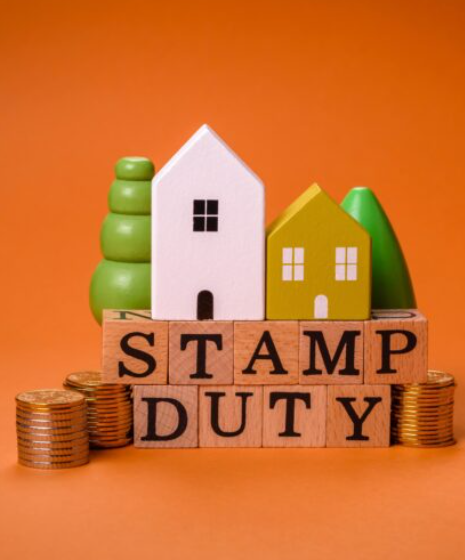Stamp duty tax is an essential consideration when purchasing property in the UK. It is applied to property or land transactions, but the specifics of the tax depend on where the property is located. While England and Northern Ireland are subject to Stamp Duty Land Tax (SDLT), Scotland and Wales use their own tax systems—Land and Buildings Transaction Tax (LBTT) and Land Transaction Tax (LTT), respectively. In this guide, we’ll explain the key points of stamp duty tax, the current changes, and how it’s calculated.
Who Pays Stamp Duty Tax?
Stamp duty tax is levied on property buyers, regardless of whether the property is freehold (owned outright) or leasehold (bought through a mortgage). The following groups of buyers are generally subject to stamp duty tax unless they meet certain exemptions or fall within the tax-free threshold:
- Residential property buyers
- Non-residential property buyers
- First-time buyers
- Second home buyers
- Investors
- Shared ownership buyers
Typically, it is the responsibility of the conveyancer, solicitor, or real estate agent to file the Stamp Duty Land Tax return, collect the amount owed from the buyer, and remit the payment to HMRC. The payment is due within 14 days in England and Northern Ireland or 30 days in Scotland and Wales from the completion of the property transaction. If buyers choose to manage the paperwork themselves, they must ensure the tax is paid promptly, or risk penalties. Many choose to seek guidance from tax experts to avoid missing out on reliefs or making mistakes.
Stamp Duty Land Tax (SDLT) vs. Land and Buildings Transaction Tax (LBTT) and Land Transaction Tax (LTT)
Stamp duty taxes vary depending on the location of the property:
- England and Northern Ireland: Stamp Duty Land Tax (SDLT)
- Scotland: Land and Buildings Transaction Tax (LBTT)
- Wales: Land Transaction Tax (LTT)
Each tax has different thresholds and rates, especially when it comes to main residences versus additional properties (like second homes). For example, non-residential properties are taxed differently, and rates also differ depending on whether the buyer is a first-time or second-time homebuyer. Buyers can use these thresholds and rates to estimate how much tax they’ll owe.
Stamp Duty Land Tax (SDLT)
Starting from 1 April 2025, new changes have been introduced for both main residential properties and second homes. Here’s a breakdown of the SDLT rates:
- Up to £125,000: 0% for main residences, 5% for additional properties
- £125,001 to £250,000 (or up to £300,000 for first-time buyers): 2% for main residences, 7% for additional properties
- £250,001 to £925,000: 5% for main residences, 10% for additional properties
- £925,001 to £1.5 million: 10% for main residences, 15% for additional properties
- Over £1.5 million: 12% for main residences, 17% for additional properties
For first-time buyers, the SDLT relief is now available on the first £300,000 of the property value (down from £425,000), with a reduced rate applying to the portion between £300,000 and £500,000. No relief is available for properties above £500,000.
Land and Buildings Transaction Tax (LBTT)
In Scotland, the LBTT applies to residential properties with the following rates:
- Up to £145,000 (or £175,000 for first-time buyers): 0% for main residences, 4% for additional properties
- £145,001 to £250,000: 2% for main residences, 6% for additional properties
- £250,001 to £325,000: 5% for main residences, 9% for additional properties
- £325,001 to £750,000: 10% for main residences, 14% for additional properties
- Over £750,000: 12% for main residences, 16% for additional properties
Scotland also applies a 4% Additional Dwelling Supplement (ADS) on second homes, which is similar to the additional property tax in England.
Land Transaction Tax (LTT)
In Wales, the rates for LTT are as follows:
- Up to £225,000: 0% for main residences, 4% for additional properties
- £225,001 to £400,000: 6% for main residences, 8% for additional properties
- £400,001 to £750,000: 7.5% for main residences, 12% for additional properties
- £750,001 to £1.5 million: 10% for main residences, 14% for additional properties
- Over £1.5 million: 12% for main residences, 16% for additional properties
The rates for additional properties in Wales are significantly higher, ranging from 4% to 16%.
How is Stamp Duty Tax Calculated?
The stamp duty tax amount is determined by the property’s price and location. For example, in England, if a first-time buyer purchases a property for £450,000, the SDLT calculation would be:
- The first £300,000 is tax-free for first-time buyers.
- The remaining £150,000 is taxed at 5%, which is £7,500.
So, the total SDLT payable would be £7,500.
For properties in Scotland and Wales, similar calculations are done using the relevant LBTT and LTT rates.
Exemptions and Reliefs
There are various exemptions and reliefs available to reduce the amount of stamp duty tax paid:
- Zero-Rate Stamp Duty Tax: Self-built homes and zero-carbon homes worth less than £500,000 are exempt.
- First-Time Buyer Relief: If you’re a first-time homebuyer, you may be eligible for reduced or zero stamp duty rates, depending on the property price and location.
- Shared Ownership Relief: Buyers of shared ownership properties only pay stamp duty on the portion of the property they own.
- Multiple Dwelling Relief: If you purchase more than one dwelling, you may qualify for relief to reduce the total tax.
- Charities Relief: Charities purchasing property for charitable purposes are exempt from stamp duty tax.
Recent Changes and Updates [2025]
From 1 April 2025, there have been some important changes to the SDLT system:
- The zero-rate threshold for first-time buyers has decreased to £300,000 (down from £425,000).
- The threshold for First-Time Homebuyer’s Relief has been reduced to £500,000 (from £625,000).
- The non-first-time buyer threshold has decreased to £125,000 (from £250,000).
The stamp duty rates and thresholds in Scotland and Wales remain the same as before.
Conclusion
Understanding stamp duty tax is crucial for anyone purchasing property in the UK. Whether you’re buying a first home, a second property, or investing in real estate, knowing the rates, exemptions, and reliefs that apply to your situation can save you money. Be sure to check the specific rates and thresholds for your location and seek professional advice if you’re unsure about the calculations or reliefs available to you.



